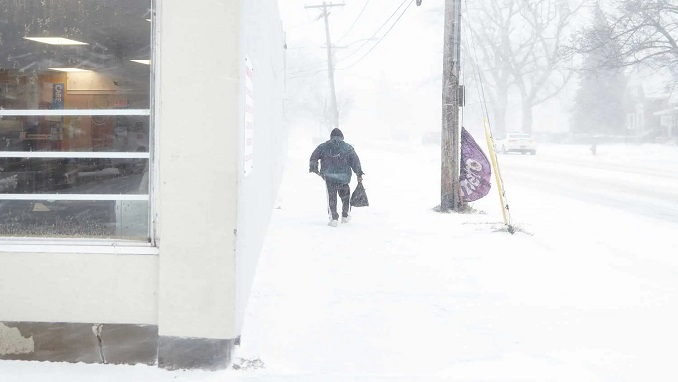
Driving snow and plummeting temperatures have formed a storm that spans some 2,000 miles, knocking out power from Texas to Maine. The storm is being described as a “once-in-a-generation type event.”
About two-thirds of the U.S. population is under some form of winter warning or advisory today. The massive story has affected more than 200 million people.
More than 1.5 million customers were without power across the country as of midday Friday. Residents in states such as North Carolina, Virginia, and Texas are among the hardest hit. In Canada, Quebec also reported major outages.
The storm has devastated travel plans for the holiday season. Travelers across the United States are being split into two groups: those caught in logistical turmoil caused by the “bomb cyclone,” and those being spared, at least for the moment.
More than 10,000 flights have been impacted by the storm as of Friday afternoon.
More than 9,000 flights have been disrupted by early afternoon today after 11,000 plus flights were disrupted on Thursday. The cascading effect of earlier cancellations began to snarl travel even at airports where the weather was not bad.
At least seven people died this week in vehicle crashes that authorities said were likely related to the storm in Kentucky, Kansas, and Oklahoma. Local authorities across the country advised caution as high winds and heavy snow combined to create whiteout conditions.
Several interstate highways were closed in Western New York, and a travel ban was announced in Erie County, which includes Buffalo. Floodwaters, elevated by the storm as well as a new moon, were already rising in vulnerable shoreline communities.
The arctic air mass is making its way into northeastern coastal cities during the early afternoon on Friday, and will eventually extend deep into the Florida Peninsula.
Temperatures are expected to rapidly drop, as much as 15 to 20 degrees in only a few hours. Wind chills will be in the single digits, to around 10 above zero by late afternoon.
With the arctic air mass fully entrenched across the eastern United States, at least 44 states will experience frigid, below-average low temperatures early on Saturday morning.

Be the first to comment